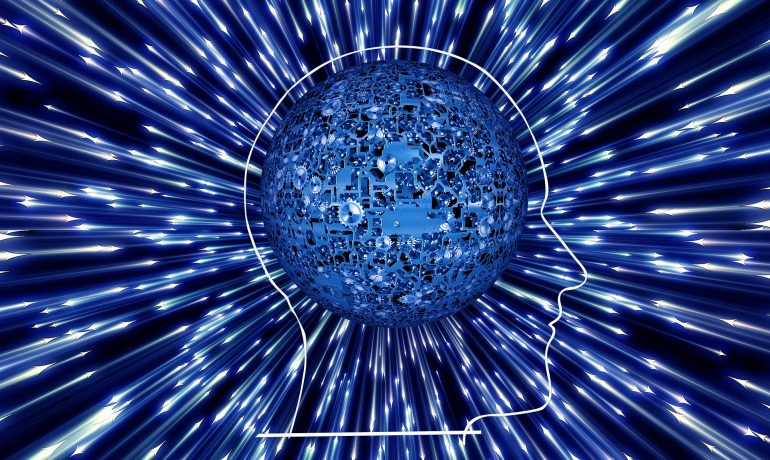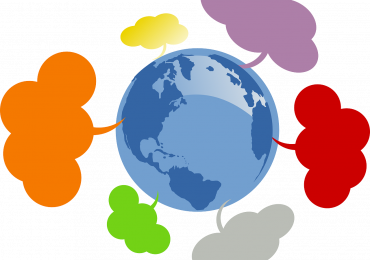We identified the “Fourth Industrial Revolution” – the application of digital technologies and related advances – as our fourth Driver of Change. The Covid-19 pandemic led to the broader adoption of digital technology to everyday life. Working from Home meant changing work patterns, with implications for transport systems, the built environment and building design, and the role of physical shopping. The (at least partial) separation of workplace and office meant that rural areas became more attractive. Digital health technology could support telehealth visits, to better meet both patient and provider needs. In most cases, hybrid solutions seem to be the “new normal”. “Digital twins” are finding applications in construction, where a 3D scan of the building is used to test performance.
A major shift is occurring at the nexus of the Internet of Things (IoT) and Artificial Intelligence. INTERNET OF THINGS means a massive increase in sensors, many embedded in other devices, or even in the body, generating vast amounts of data. For example, engineers have devised a new kind of wearable sensor – “e-skin” – that communicates wirelessly without requiring onboard chips or batteries. But digital health tools are in practice delivering the most for wealthy, well-educated patients, who can afford to buy the gadgets and the accompanying services. According to surveys, digital health currently helps those who have the best access to healthcare in all other channels as well.
Romania’s first ‘smart’ forest has been equipped with acoustic monitoring sensors and AI technology to identify the sounds of chainsaws being used and send real-time alerts to rangers’ mobile phones in order to prevent illegal logging.
ARTIFICIAL INTELLIGENCE is becoming increasingly prevalent. The term is sometimes hyped simply to mean algorithmic decision-making, but sophisticated AI is emerging in everything from personal assistants to high-end medical applications. Here it is surpassing radiographers, diagnosing skin cancers, and detecting sepsis. Mostly these applications are used to support existing professionals rather than replace them.
The debate about whether AI will cause mass redundancies is ongoing. There is a school of thought that suggests that human empathy will ensure many roles remain, despite AI being better at recognising facial expressions than humans. Nonetheless, most commentators suggest that AI will create more jobs than it destroys.
AI is also having to face up to ethical issues. Because of the data AI systems are trained on, existing bias can be built into the system. Skin cancer applications work less well on dark skin; face recognition systems perform less well with ethnic minorities. UNESCO has agreed on common values and principles needed to ensure the necessary legal infrastructure to ensure the ethical development. These principles also explicitly ban the use of AI systems for social scoring and mass surveillance, though this has not prevented some countries extensively using AI systems for exactly that. And in the 2021 Reith Lectures, Professor Stuart Russell Professor, founder of the Center for Human-Compatible Artificial Intelligence at the University of California, Berkeley, describes the progress in restricting “Lethal Automated Weapons Systems”. We wrote in more depth about AI in our blog on the “Industry 4.0: Enabling Technologies and Inclusive Digitization for Post COVID-19 Economic Recovery in APEC Value Chains” conference.
AUTONOMOUS VEHICLES
The Chinese company Baidu has demonstrated an AV that can operate without a driver though it must be pre-loaded with a detailed map, thus limiting the areas where the vehicles can operate. The dream of fully “self-driving cars” however is probably some way from being realised, as the challenges at the extremes, in the last 10% of experiences, are very hard to address. Nonetheless, the UK Government is preparing the ground with regulations that make manufacturers responsible for the vehicle’s actions when self-driving.
Truly autonomous vehicles would lead to major changes in road design, parking and car ownership. It is often assumed that AVs would go hand-in-hand with car sharing. But surely if an AV is in effect a moving living or office, personalisation would be essential?
IBM’s crewless AI-powered Mayflower ship broke down on its second attempt to cross the Atlantic ocean alone. The problem appears to with the ship’s generator, and none of its machine-learning software capabilities have been affected.
Airplane auto-pilot systems are as near as any to a fully autonomous vehicle. Volkswagen has demonstrated a prototype flying autonomous taxi.
ROBOTS
Humanoid robots attract attention, but the practical developments are generally very different. Most perform a limited range of tasks – vacuuming, mowing the lawn – with defined characteristics. “Cobots” are increasingly used to collaborate with each other and with people, merging the robots’ strength and precision with the adaptability and situational awareness of human users.
In four experiments on pig tissues, a robot sutured two ends of intestine—one of the most intricate and delicate tasks in abdominal surgery – without human help. The procedure requires a high level of repetitive motion and precision, with high accuracy and consistency.
Soft robots with natural movements and tactile responses like those of living organisms can apply the right amount of force to grip different objects. They could be suitable for exploring rough and unknown terrain or for medical applications.
DRONES
Drone applications are multiplying rapidly, as cheaper versions become available – from surveillance to delivering medicines in difficult terrain. Military applications use drone swarms that communicate with each other to overwhelm defences.
They are also getting smaller. A team at MIT have developed tiny drones that can fly, dodge, and weave like actual insects. The drone’s wings flap nearly 500 times per second, 50 times faster than a typical hummingbird.
3D PRINTING
3D printing is increasingly viable at scale, even up to printing a house in just 12 hours. A hybrid design that combines 3D-printed concrete with conventional wood framing shows how each material can be used where it works best.
A novel combination of a team of drones equipped with 3D printers is being used to print emergency shelters in disaster zones.
Extensive use of 3D printing could have important secondary effects. If products can be printed locally there will be less need for road haulage. Value will migrate to the intellectual property in product design rather than in manufacture. But there may be quality control and safety issues – will people be happy with brake linings printed in a back-street garage?
VIRTUAL REALITY (VR)
Virtual Reality (VR) technology applications appear to be moving into specific niches, mainly around education and training. One example is enabling surgeons to plan and prepare for heart surgery using a 3D digital image of the patient’s heart. This can shorten operation times, reduce the need for multiple surgeries and lead to better outcomes and experiences for patients.
MACHINE INTERFACES
Advances in brain-reading devices enable users to control a robotic arm, use Photoshop software, play ‘shoot-’em-up’ video games, and now to drive a simulated car through a virtual environment, changing speed, steering and reacting to hazards. Are these the first steps to “telepathy”?
BEYOND 4IR
There’s a good argument that we are already in the Fourth Industrial Revolution. As futurists, therefore, we’re already thinking about:
INDUSTRY 5.0 is described as “people working alongside robots and smart machines”, and includes AI, Connectivity, Robotics and the development of such innovations as “Smart Cities”. Industry 5.0 is more human-centric than the process-driven 4.0.
INDUSTRY 6.0 evolves further. It is “Ubiquitous, customer-driven, virtualized, antifragile manufacturing”: customer-centric, highly customized, with hyper-connected factories and dynamic supply chains.
INDUSTRY X is where it all comes together: the nexus point of industry, AI, biotechnology, IoT: green, circular, cognitive manufacturing. All pervasive and truly revolutionary, this is where the future really lies.
IN CONCLUSION
The speed and scope of technological change continues to amaze. As well as its direct effects in particular applications, there are major systemic impacts on business models, urban design, social behaviour and many more. Thinking through such consequences is a vital part of foresight activity.
Written by Huw Williams, SAMI Principal
The views expressed are those of the author(s) and not necessarily of SAMI Consulting.
Achieve more by understanding what the future may bring. We bring skills developed over thirty years of international and national projects to create actionable, transformative strategy. Futures, foresight and scenario planning to make robust decisions in uncertain times. Find out more at www.samiconsulting.co.uk
If you enjoyed this blog from SAMI Consulting, the home of scenario planning, please sign up for our monthly newsletter here and/or browse our website.


